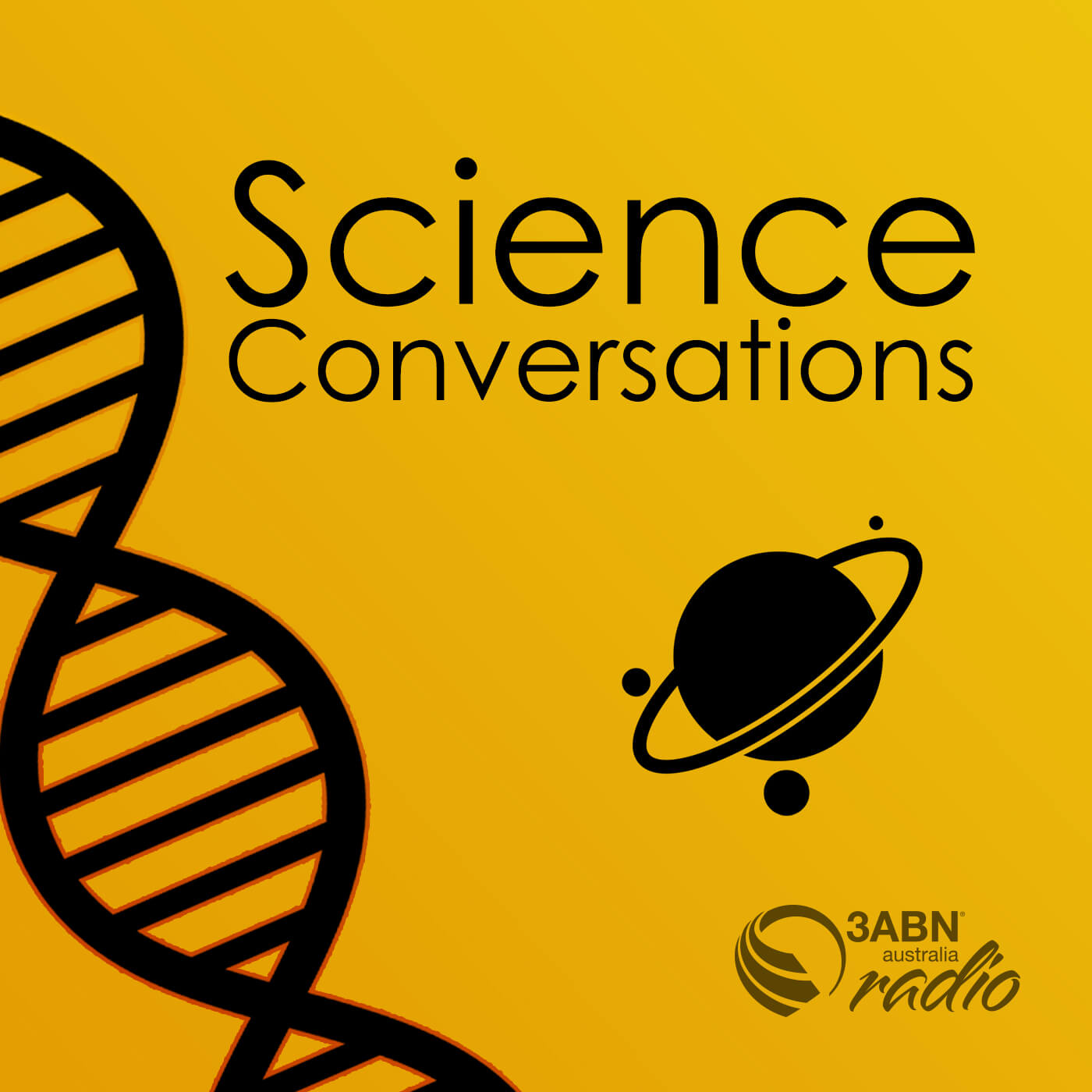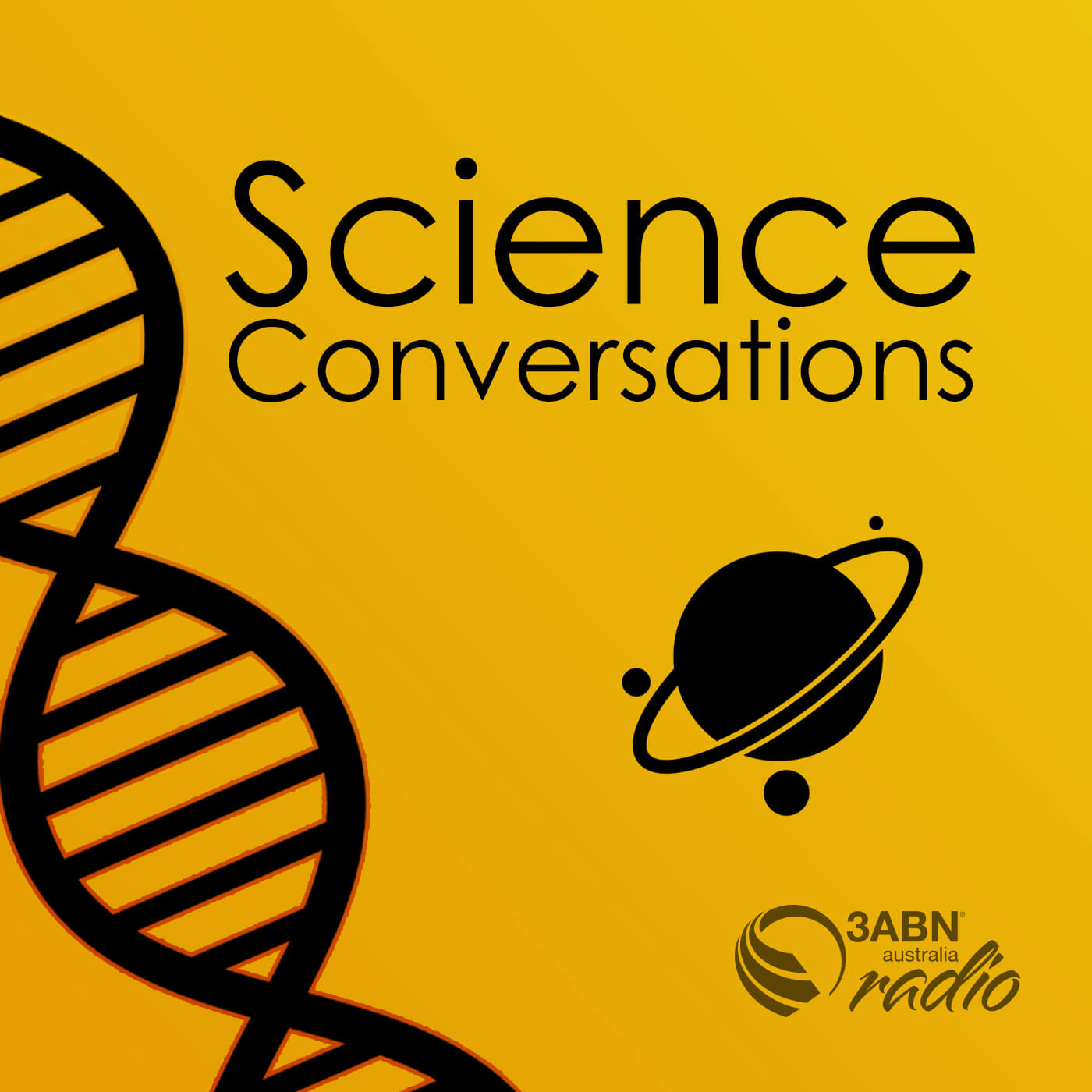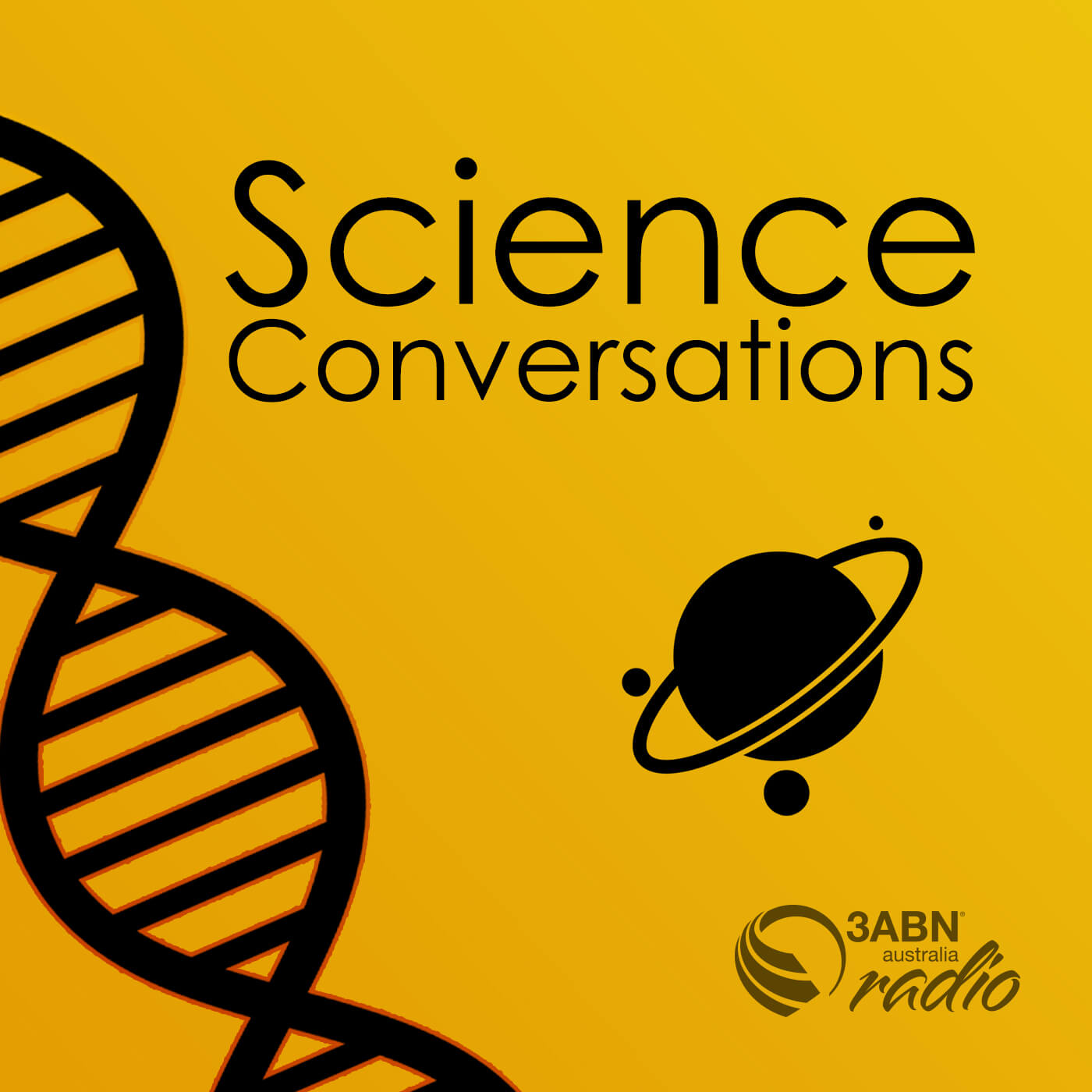Episode Transcript
Welcome to Science Conversations. I'm Kaysie Vokurka. How accurate is radiometric dating? Joining me to discuss part one of this topic is Dr. John Ashton. Welcome to the program, Dr. John hello, Kaysie. Dr. John Ashton has written a book entitled Evolution Impossible 12 Reasons why Evolution Cannot Explain the Origin of Life on Earth. And we'll be referring to this book as part of the program. And we are looking at chapter 10 in this section. So, John, can you share with us how radioactive indicators actually became to be used for geologic dating?
SPEAKER 2
Yes. Right. So the original dating methods were based on estimates of how fast sediments formed. As sediments were washed down into the mouth of rivers, they looked at the thickness of how the sediments built up, and then on the basis of the thickness of the sediment, they then calculated the ages. And so that's how the ages were calculated in the 1800s, in the latter part of the 1800s. And course, the thickness of the sediment led them, because some sediments are hugely thick, maybe a kilometer even more thick. Kilometers thick, they calculated, means hundreds of millions of years, in fact. And the layers were then identified. They found in the different layers there were different types of fossils. And that was the basis of the geological column that was proposed by Charles Lowell back in the early mid-1800s. Now, the end of the 1800s, radioactivity was discovered, and they discovered that there were radioactive elements at the different depths in the strata. And they began calculating in the early 1900s, they began calculating the half life of radioactive elements. And on the basis of this, Holmes, back in about 1910, calculated that, yes, there seemed to be a correlation between the radioactivity at different depths or in different positions in the different geological columns. And a lot of work was done. And particularly after the war, as methods of measuring radioactivity became more accurate, a number of about five samples at different positions in the geologic column were had their radioactivity measured using uranium isotopes at that stage. And it's quite interesting actually, how the radiometric or the dates that they calculated, working on the time that it takes for the element to decay. So you have a mother element decays into the daughter element, and there's a half life of that. So that's the time at which half of the element has decayed away. So it's the half lives. So the concentration would drop by half or the increase in daughter element would increase by half over that time. And it just so happened that these dates that they calculated were very close to the estimated ages that had been put in for the geologic column.
SPEAKER 1
So.
SPEAKER 2
So that really convinced everybody that this was a very valid method. Now, it was essentially on one set of results, really. I think, though, from data. From work was done mainly around the Appalachian Mountains in the United States, from memory, I think. So this was. This really cemented it in place then this work that was done back in 947.
SPEAKER 1
Right. So this was then seen as of extra evidence from another avenue that supported the theory behind, like, the ages of the geologic column. It just kind of gave extra impetus to that idea, didn't it?
SPEAKER 2
Yes. Now, the thing is, they only measured them at five points spanning about, you know, 500 million years or so, I think, from memory, or maybe a bit long, bit longer. And what they did was depending on the thickness of the layer, sedimentary layer, that's how they got the intermediate dates. So there was just a pure linear association between the two. Now, this should ring alarm bells straight away in that we know that the Earth has had a catastrophic past. When we look at the strata, and we've discussed this previously, obviously the uniformitarian principle that everything has just been slowly slowed down over millions of years is contradicted by the fact, well, hang on, we've got massive evidences of catastrophes occurring and rapid deposition of material. So the fact that all these points lined up should have rung alarm bells straight away. The other interesting thing is now, since that time, they've done a lot more work and they now use a range of different radioisotopes. But one of the things that is quite important is when you look at the textbooks on how to do radiometric dating, they say that you look at how old you think the rock is from the fossil record data that was estimated on the basis of deposition rates, and then you choose a radioactive element with a half life of about that age. So if you're looking strata that, say, 200 million years old according to conventional dating from the fossils, then you should do your radiometric dating with an isotope that has a half life of about 200 million years. There's a bit of circular reasoning going on here, as we can see. And as I said, this whole plan fits on this assumption of uniformitarianism over hundreds of millions of years. Now, recently we showed that erosion rates show that the continents would erode away in less than 10 million years. There's a whole lot of other inconsistent data coming here. But nonetheless, people have continued with this because you can take it into a laboratory, you can accurately measure the rate of decay. We can accurately now analyze the levels of the different isotopes using accelerated mass spectrometers, and this sort of thing, we can get very accurate data. And so because our ability to measure accurately these levels have led to the assumption that what we have interpreted as the consequences of these measurements is correct. And I think that's a major problem. Now, there are a number of other things that underpin that. One of the ones is that there's been no leeching away of the daughter element, that there's been no influx of either parent or daughter.
SPEAKER 1
Okay, so these are assumptions which are being made to. With that data that they're collecting.
SPEAKER 2
Yes, yes, that's right. And that there's no leaching that has occurred that has removed material, all this sort of thing, or added to it, that brought material in. And these are a lot of things that we don't know. Now, they tried to get around that by what they call isochron dating. It's the most accurate form. And what they do there is they analyze different minerals in the same rock and then they plot the data on a straight line. If they get a good straight line, they assume that there's been minimum losses. And one of the basis for this is you assume that if there is losses of one type of mineral, a different type of mineral may not have been leached at the same rate. But there's still a whole lot of other assumptions that underpin this, that the rate of decay has been the same all that time. We know it's affected by gravity, for example. Other things can affect it. And also there's evidence for faster radio decay in the past as well. So it's a lot of ifs and buts that are associated with this methodology.
SPEAKER 1
And I guess we could hardly be able to tell how much, if a catastrophic past is a reality for Earth, how much that would have had an impact on some of these decay rates, given the different circumstances of.
SPEAKER 2
Well, that's exactly right.
SPEAKER 1
We can measure that.
SPEAKER 2
Yes, that's right. So we've got two problems. We have to assume the ray of decay is constant. We have to. And there's a lot of assumptions with regard to the amount of material there and this sort of thing. But I think the glaring one is that these ages that we calculate are vastly different to real practical ages, that the rocks must be old on the basis of. Of erosion rates, deposition rates of volcanic material, erosion rates into the ocean, thickness of sediments. They all vastly disagree with the results that we get for the ages of rocks on the continent by radiometric dating. And this is very, very significant. So there's a huge inconsistency there. And the other thing is that the whole theory underpinning radiometric dating is based on the uniformitarian principle. And again, as we've just discussed, we have overwhelming consistent evidence from around the world of a catastrophic path. A matter of fact, they talk about major extinction events occurring, you know, at different times. And these are massive extinction events occurring as a result of water inundation, which again, fits the flood model. So the biblical flood model says that, hang on, this all occurred at once. There was just one major catastrophe that wiped these things out. And it was also a very short time ago. And that is totally consistent with these other measurements that we look at erosion rates and these sort of things, but totally inconsistent with these very, very long ages that are now calculated on the basis of radiometric dating.
SPEAKER 1
And of course, with some of these topics. I guess we refer our listeners to what we talked about in some previous chapters where we unpacked some of those erosion rate, sedimentation rates, and the significance of that as evidence to consider in relation to the uniformitarian ages that are proposed.
SPEAKER 2
Yes, and I think people need to understand that in terms of radiometric dating, what we're measuring are the concentrations of radioactive materials. Now, we don't know what the concentrations were 100 million years ago or thousands, so called whenever in the past sometime. We don't know what the initial concentrations were. So what we have is we have a concentration of a mother element, we have a concentration of a daughter element. And calculating those different ratios and the concentrations and the theoretical rate of decay, we calculate an age. But it's based on so many other assumptions that we can't know because again, we, we don't know what the initial conditions were. And again, we're just measuring concentrations now. So there's a whole lot of ifs involved in that interpretation. And of course, once you have different minerals and so, you know, around and this sort of thing, that the mass can get fairly complicated. And while we're good at mass, the thing is, again, we still don't know what the initial conditions were. We have to assume that. And as I said, on the basis of when we look at other factors that we would be influencing those conditions, they all disagree with the ages calculated by radiometric dating.
SPEAKER 1
Yeah, yeah, there's some very significant things to consider here because like from a scientific perspective and accuracy, some of these are some big flaws. And you mentioned also circular reasoning as well, and people interpreting data based on what's already there, not on what has been found.
SPEAKER 2
If you initially select a radioisotope with a massive half life, you know, it's that they're the sort of ages you're going to calculate, because if you're looking at a much, much younger age, you're going to be working at very, very, very small differences.
SPEAKER 1
Yes.
SPEAKER 2
And that's where the error of measurement involved as well. So they're, again, going to have a bias to give these longer ages.
SPEAKER 1
Yes.
SPEAKER 2
And so I think one of the important things is that people have essentially assumed that radiometric dating is the gold standard. And on the basis of this, then they said, okay, the Earth must be old. And they've thrown out all the other evidence that is saying, hang on, everything is pointing to it being young except radiometric dating. Because when we look at the thickness, the ages that were calculated on the basis of thicknesses, again, those ages were based on an assumption that we now know is wrong. They were based on the uniformitarian principle of gradual deposition over vast period of time. And we know the absence of erosion gullies and all this sort of thing, and looking at erosion rates, that assumption is not correct. And so radiometric dating fails on a couple of major assumptions, really. And yet in people's minds, it's still assumed to be the gold standard. And this is where we've got to overcome. People just automatically think, oh, radiometric dating, that must be right. But the evidence is saying, hang on, we've got major, major problems with what we. What the values we're calculating from radiometric dating. Mm.
SPEAKER 1
Very important things to consider and to have an, I guess, an open mind for what the evidence is really saying and how it's all fitting together. So we're going to talk more about this. We're going to do another session very soon. And next time we'll continue to examine the question, how accurate is radiometric dating? Be sure to join us.


